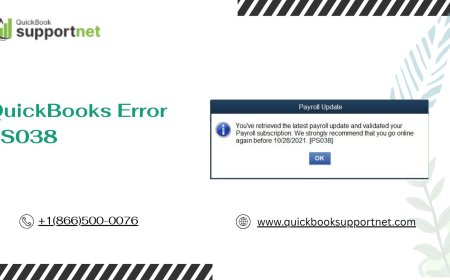How To Hike Losco Regional Park Jacksonville Loop
How to Hike Losco Regional Park Jacksonville Loop Losco Regional Park, nestled in the heart of Jacksonville, Florida, is a hidden gem for outdoor enthusiasts seeking a peaceful escape from urban life. While many visitors flock to the city’s beaches or larger state parks, the Losco Regional Park Jacksonville Loop offers a uniquely accessible, well-maintained trail experience that blends natural bea
How to Hike Losco Regional Park Jacksonville Loop
Losco Regional Park, nestled in the heart of Jacksonville, Florida, is a hidden gem for outdoor enthusiasts seeking a peaceful escape from urban life. While many visitors flock to the city’s beaches or larger state parks, the Losco Regional Park Jacksonville Loop offers a uniquely accessible, well-maintained trail experience that blends natural beauty with urban convenience. This 3.2-mile loop trail winds through native Florida scrub, hardwood hammocks, and wetland edges, offering hikers a diverse ecosystem in a compact, manageable route. Whether you’re a seasoned trail runner, a family looking for a weekend adventure, or a beginner eager to explore nature on foot, the Losco Loop delivers a rewarding experience without requiring extensive travel or preparation.
What sets this trail apart is its seamless integration into the local community. Located just minutes from downtown Jacksonville, Losco Regional Park provides a rare opportunity to immerse yourself in native Florida flora and fauna without leaving the city limits. The trail is marked with clear signage, features shaded rest areas, and is ADA-accessible in key sections, making it one of the most inclusive hiking options in the region. Moreover, its popularity among local schools, fitness groups, and nature photographers ensures a steady pulse of activity — yet the trail never feels overcrowded due to its thoughtful design and multiple entry points.
Understanding how to hike the Losco Regional Park Jacksonville Loop isn’t just about following a path — it’s about preparing for the environment, respecting the ecosystem, and maximizing your safety and enjoyment. This guide provides a comprehensive, step-by-step walkthrough of everything you need to know to navigate the trail with confidence, from pre-hike planning to post-walk reflection. By the end of this tutorial, you’ll not only know how to complete the loop, but also how to appreciate its ecological significance, avoid common pitfalls, and return again and again with new discoveries each time.
Step-by-Step Guide
Before you lace up your shoes, it’s essential to approach the Losco Regional Park Jacksonville Loop with a clear plan. This step-by-step guide ensures you’re fully prepared, safe, and able to enjoy every moment of your hike.
1. Locate and Access the Park
Losco Regional Park is situated at 11801 San Jose Blvd, Jacksonville, FL 32257. The primary trailhead for the Jacksonville Loop is located at the main parking lot off San Jose Boulevard, near the park’s administrative building. GPS coordinates: 30.3375° N, 81.6167° W. If you’re coming from downtown Jacksonville, take I-95 south to Exit 352 (San Jose Blvd), then head west for approximately 1.5 miles. The park entrance is clearly marked with a brown Florida State Parks sign and a large wooden archway reading “Losco Regional Park.”
Alternative access points include the eastern trailhead near the community center (accessible via Squirrel Road) and the northern entrance off Old St. Augustine Road. These secondary points are ideal if you want to shorten your hike or avoid peak parking times. However, for the full loop experience, start at the main parking lot.
2. Check Trail Conditions and Weather
Florida’s weather is unpredictable, even in cooler months. Before heading out, consult the Duval County Parks and Recreation website for real-time trail updates. Look for notices regarding recent rainfall, trail closures due to maintenance, or wildlife activity. After heavy rains, portions of the loop — particularly near the seasonal wetlands — can become muddy or temporarily flooded. The park staff often posts signs at trailheads with advisory notices.
Avoid hiking during midday heat (11 a.m. – 3 p.m.) in summer months. Even in winter, humidity can make trails feel more strenuous than they are. Early morning or late afternoon hikes offer the best lighting, cooler temperatures, and increased chances of spotting wildlife.
3. Prepare Your Gear
While the Losco Loop is a relatively easy trail, proper gear enhances comfort and safety:
- Footwear: Closed-toe trail shoes or lightweight hiking boots with good traction are recommended. The trail surface is mostly packed earth and sand, but loose gravel and tree roots can cause slips.
- Hydration: Carry at least 16–20 oz of water per person. There are no water fountains along the loop, though restrooms with running water are available at the main parking lot.
- Snacks: Bring energy bars, trail mix, or fruit. The trail has no vendors or concessions.
- Protection: Sunscreen, insect repellent, and a wide-brimmed hat are essential. Mosquitoes and biting flies are active year-round, especially near wetland zones.
- Navigation: Download the trail map offline using AllTrails or Gaia GPS. Cell service is spotty in wooded sections.
- Backpack: A small, lightweight daypack keeps essentials accessible without restricting movement.
Do not bring pets on the trail — Losco Regional Park prohibits animals on hiking paths to protect native wildlife. Service animals are permitted with proper identification.
4. Begin the Loop at the Main Trailhead
From the main parking lot, follow the paved path toward the wooden trailhead kiosk. Here, you’ll find a map of the loop, distance markers, and a trail etiquette guide. The loop is marked with blue diamond-shaped blazes on trees and posts — follow these consistently. The trail begins with a gentle incline through a live oak canopy, with ferns and saw palmetto lining the path.
For the first 0.6 miles, the trail is wide and flat, ideal for warming up. Watch for interpretive signs describing native plants like the cabbage palm, firebush, and wild coffee. These signs are part of an educational initiative by the Jacksonville Zoo and Gardens to promote ecological literacy.
5. Navigate Key Trail Segments
The loop is divided into four distinct segments, each with unique terrain and features:
Segment 1: Oak Canopy Trail (0–0.8 miles)
This section is shaded and smooth, with minimal elevation change. It’s perfect for families and beginners. Look for white-tailed deer tracks in the soft soil and listen for the calls of Carolina wrens and pileated woodpeckers.
Segment 2: Wetland Boardwalk (0.8–1.6 miles)
Here, the trail transitions onto a raised wooden boardwalk that crosses a seasonal marsh. This is the most ecologically sensitive area. Stay on the boardwalk — stepping off damages rare carnivorous plants like pitcher plants and sundews. Watch for dragonflies, red-winged blackbirds, and the occasional alligator snapping turtle near the water’s edge.
Segment 3: Scrub Ridge (1.6–2.4 miles)
As you climb gently upward, the vegetation changes to Florida scrub — a fire-adapted ecosystem found only in a few regions of the state. You’ll see sand pines, myrtle oak, and the rare Florida rosemary. This section is the most exposed to sun, so plan accordingly. The ridge offers the best panoramic views of the park’s canopy.
Segment 4: Pine Flatwood Return (2.4–3.2 miles)
The final leg descends gently through open pine flatwoods. The trail here is sandy and slightly narrower. Look for the distinctive scent of pine resin in the air. This section is popular with birdwatchers — keep an eye out for eastern bluebirds, brown-headed nuthatches, and the elusive Florida scrub-jay, a threatened species endemic to this habitat.
6. Complete the Loop and Exit
After 3.2 miles, you’ll return to the main trailhead. Take a moment to rest on the bench near the kiosk and reflect on your journey. Use the restroom facilities if needed, and rinse your shoes on the outdoor cleaning station before returning to your vehicle. Avoid dumping mud or debris into trash bins — use the designated brush-off mat instead.
7. Post-Hike Reflection
Take a few minutes after your hike to journal or photograph what you observed. Note changes in plant life, animal activity, or weather patterns. Over time, this practice deepens your connection to the trail and helps you notice seasonal shifts — a hallmark of mindful outdoor engagement.
Best Practices
Hiking the Losco Regional Park Jacksonville Loop isn’t just about covering distance — it’s about cultivating a respectful, sustainable relationship with the natural environment. These best practices ensure the trail remains pristine for future visitors and minimizes your ecological footprint.
Leave No Trace Principles
Adhere strictly to the seven Leave No Trace principles:
- Plan Ahead and Prepare: Know the trail length, difficulty, and regulations. Bring all necessary supplies — there are no trash cans along the loop.
- Travel and Camp on Durable Surfaces: Stay on marked trails. Cutting switchbacks or creating new paths damages root systems and accelerates erosion.
- Dispose of Waste Properly: Pack out all trash, including food wrappers, tissue, and biodegradable items like apple cores. Even organic waste can disrupt local wildlife diets.
- Leave What You Find: Do not pick flowers, collect pinecones, or carve into trees. These are living components of a fragile ecosystem.
- Minimize Campfire Impacts: Fires are prohibited on the trail. Use portable stoves if cooking nearby.
- Respect Wildlife: Observe animals from a distance. Never feed them. Even well-intentioned offerings like bread or crackers can cause malnutrition or dependency.
- Be Considerate of Other Visitors: Keep noise levels low. Yield to faster hikers on narrow sections. Use headphones for music or podcasts.
Timing and Crowd Management
Weekend mornings (8–10 a.m.) are the busiest. If you prefer solitude, visit on weekdays or during the late afternoon (4–6 p.m.). The trail is rarely empty, but midweek afternoons offer the quietest experience. Avoid holidays and school breaks if you seek peace.
Seasonal Awareness
Florida’s climate dramatically affects trail conditions:
- Summer (June–September): High heat and humidity. Thunderstorms are common afternoons. Hike early. Carry extra water and electrolytes.
- Fall (October–November): Ideal hiking weather. Cooler temps, lower humidity, and reduced insect activity.
- Winter (December–February): Mild days (60–75°F). Peak season for bird migration — bring binoculars.
- Spring (March–May): Blooming season. Wildflowers like black-eyed Susans and butterfly weed appear. Watch for increased tick activity — perform a full-body check after your hike.
Wildlife Safety
Losco Regional Park is home to native species that require space and respect:
- Alligators: Rarely seen on the trail, but present in wetland areas. Never approach or provoke. If you see one, back away slowly and alert others.
- Snakes: Non-venomous species like the eastern rat snake and black racer are common. Venomous copperheads and cottonmouths are rare but possible. Give them space — they’ll retreat if undisturbed.
- Bears and Bobcats: Not present in this area. Urban Jacksonville does not support large predators.
- Ticks and Mosquitoes: Use permethrin-treated clothing or DEET-based repellent. Check for ticks behind ears, under arms, and in hair after your hike.
Trail Etiquette
Be mindful of others sharing the trail:
- Yield to uphill hikers and faster-moving trail runners.
- Use a bell or voice to announce your presence when passing others.
- Keep group sizes small (no more than 6 people) to minimize noise and environmental impact.
- Do not play loud music or use speakers — the park is a sanctuary for quiet recreation.
- If you encounter a group of schoolchildren on a nature walk, pause and let them pass.
Tools and Resources
Maximizing your experience on the Losco Regional Park Jacksonville Loop requires more than just a pair of shoes — it demands the right tools and access to reliable information. Below is a curated list of digital and physical resources to enhance your preparation, navigation, and appreciation of the trail.
Digital Mapping and Navigation Apps
- AllTrails: The most popular app for trail users. The Losco Loop is listed with user-submitted photos, recent condition reports, and elevation profiles. Download the offline map before entering the park.
- Gaia GPS: Offers topographic maps with contour lines, ideal for understanding subtle elevation changes on the Scrub Ridge segment.
- Google Maps: Use for locating parking and nearby amenities. Enable “Offline Maps” for areas with poor signal.
- iNaturalist: A citizen science app that helps identify plants and animals you encounter. Upload your observations to contribute to regional biodiversity databases.
Official Park Resources
- Duval County Parks and Recreation Website: www.coj.net/departments/parks-recreation/losco-regional-park — Official updates, event calendars, and trail closure notices.
- Florida Fish and Wildlife Conservation Commission (FWC): myfwc.com — Information on native wildlife, safety guidelines, and seasonal alerts.
- Jacksonville Zoo and Gardens — Conservation Partners: The zoo sponsors interpretive signage along the trail. Visit their website for educational materials on Florida scrub ecosystems.
Printed Materials
- Losco Regional Park Trail Map (PDF/Printable): Available for download from the Duval County website. Print a copy and carry it in a waterproof sleeve.
- “Wildflowers of North Florida” by Margaret T. Smith: A pocket guide to identifying seasonal blooms along the loop.
- “Birds of Florida” by Stan Tekiela: Compact field guide with color photos and calls for 150 common species.
Community and Volunteer Resources
- Friends of Losco Park: A local nonprofit that organizes monthly cleanups and guided nature walks. Join their mailing list at info@friendsofloscopark.org for event invitations.
- Trail Stewardship Program: Volunteers can sign up to help maintain signage, clear debris, or monitor wildlife. Training is provided.
Photography and Journaling Tools
For those seeking to document their journey:
- Smartphone with HDR mode: Captures high-contrast scenes under dappled sunlight.
- Compact journal with waterproof pages: Ideal for sketching plants or recording bird calls.
- Audio recorder: Useful for capturing ambient sounds — the rustle of wind through pines or the croak of a frog near the wetland.
Emergency Preparedness
Always carry:
- A fully charged phone with emergency contacts saved.
- A small first-aid kit with antiseptic wipes, bandages, and tweezers (for tick removal).
- A whistle — three blasts signal distress.
- A lightweight emergency blanket — useful if you’re delayed after sunset.
Real Examples
Real-world experiences from hikers who’ve completed the Losco Regional Park Jacksonville Loop offer practical insights you won’t find in guidebooks. Below are three detailed case studies — each illustrating different motivations, challenges, and discoveries.
Case Study 1: Maria, 68 — Retired Teacher, First-Time Hiker
Maria moved to Jacksonville from New York and wanted to explore local nature after retirement. She had never hiked more than a mile before. On her first attempt, she started the loop at 7 a.m. on a crisp November morning.
“I thought I’d be out of breath in five minutes,” she says. “But the trail was so gentle. The boardwalk section felt like walking on clouds. I saw a bluebird — I’d never seen one before. I took a picture with my phone and showed it to my book club. Now I come every Tuesday.”
Maria’s key takeaway: “You don’t need to be an athlete. Just show up, take your time, and look around.” She now volunteers with the Friends of Losco Park to lead “Slow Walks” for seniors.
Case Study 2: Jamal and Aisha, 12 and 10 — Siblings on a Nature Challenge
After their school assigned a “30 Days of Nature” project, Jamal and Aisha set out to complete the Losco Loop with their parents. They used the iNaturalist app to log 47 different plants and animals.
“We found a turtle shell and thought it was real,” Aisha recalls. “Turned out it was just a piece of bark. But then we saw a real turtle — and it was HUGE!”
Their parents used the hike to teach them about ecosystems: “We talked about how the boardwalk protects the wetland, and why we don’t pick flowers.” They completed the loop in 90 minutes and now plan to hike all 12 Duval County nature loops.
Case Study 3: Derek, 34 — Trail Runner and Photographer
Derek runs the Losco Loop five times a week, often at dawn. He uses the trail for training and photography. “The light at 6:30 a.m. hits the pine needles just right,” he says. “I’ve captured over 200 images of the scrub-jay here — it’s a rare bird, and this park is one of the last places in Jacksonville where it’s still seen regularly.”
His biggest challenge? “People don’t realize how fragile the scrub is. I’ve seen tourists stepping off the trail to take selfies near a patch of Florida rosemary. That plant takes 15 years to mature. One step can kill it.”
Derek now leads monthly “Photography & Preservation” walks, teaching others to capture nature without disturbing it. “The best photo is the one you don’t have to chase.”
Common Mistakes Observed
Based on feedback from park rangers and volunteers, here are recurring errors:
- Leaving water bottles or snack wrappers on the trail.
- Bringing dogs despite posted signs.
- Using drones — prohibited without a permit.
- Attempting the loop in flip-flops or sandals — resulting in slips and injuries.
- Ignoring trail markers and taking shortcuts, which erodes the surrounding habitat.
These examples underscore a simple truth: the Losco Loop rewards mindfulness. The more you learn, the more you see — and the more you respect, the longer the trail will endure.
FAQs
Is the Losco Regional Park Jacksonville Loop suitable for children?
Yes. The trail is family-friendly, with flat, well-marked paths and educational signage. Children under 10 should be supervised near wetland areas. Strollers are not recommended due to sandy and root-covered sections.
How long does it take to complete the loop?
Most hikers complete the 3.2-mile loop in 1 to 1.5 hours at a leisurely pace. Runners can finish in 30–40 minutes. Allow extra time if you plan to stop for photos, birdwatching, or reading interpretive signs.
Are restrooms available on the trail?
No restrooms are located along the loop itself. Restrooms with running water are available at the main parking lot and community center. Plan accordingly.
Can I bike or bring my dog on the trail?
No. The Losco Loop is designated for foot traffic only. Bicycles and pets (except service animals) are prohibited to protect wildlife and preserve trail conditions.
Is the trail accessible for people with mobility challenges?
Portions of the trail, including the main entrance and boardwalk section, are ADA-compliant. However, the Scrub Ridge segment has uneven terrain and is not wheelchair-accessible. Contact the park office for accessibility details before your visit.
Are there any fees to enter the park or hike the loop?
No. Losco Regional Park is free and open daily from 7 a.m. to 9 p.m. No permit or reservation is required.
What should I do if I see an injured animal?
Do not approach or attempt to handle it. Note the location and call the Florida Fish and Wildlife Conservation Commission at 888-404-3922. Park staff also monitor reports and respond quickly.
Can I camp overnight at Losco Regional Park?
No. Overnight camping is not permitted. The park is a day-use facility only.
Is the trail well-lit at night?
No. The park closes at 9 p.m. and is not illuminated. Night hiking is strictly prohibited for safety and ecological reasons.
Can I bring a drone to capture aerial footage?
Drone use is prohibited without a special permit from Duval County Parks and Recreation. This protects wildlife from stress and preserves the natural quiet of the park.
What’s the best time of year to see wildflowers?
Spring (March–May) is peak bloom season. Look for purple coneflowers, goldenrod, and the rare Florida anise. Fall brings late-blooming asters and goldenrods.
Conclusion
The Losco Regional Park Jacksonville Loop is more than a trail — it’s a living classroom, a sanctuary for wildlife, and a quiet refuge for those seeking connection with the natural world. Its accessibility, ecological richness, and thoughtful design make it one of the most valuable urban green spaces in Northeast Florida. By following the steps outlined in this guide, you’re not just hiking a path — you’re becoming a steward of a fragile and vital ecosystem.
Each footstep on this loop contributes to a larger story: one of conservation, curiosity, and community. Whether you’re a first-time hiker or a seasoned naturalist, the trail offers something new with every visit — a new bird call, a blooming flower, a shift in the light through the pines. The key is to show up with intention, leave no trace, and listen — truly listen — to the quiet rhythms of the land.
As you plan your next visit, remember: the most powerful hikes aren’t the longest or the most challenging — they’re the ones that change how you see the world. The Losco Loop doesn’t demand endurance. It asks for presence. And in return, it gives you peace, wonder, and a deeper understanding of the wild places that still thrive, even in the shadow of a city.
Grab your water, lace your shoes, and step onto the trail. The forest is waiting.

























